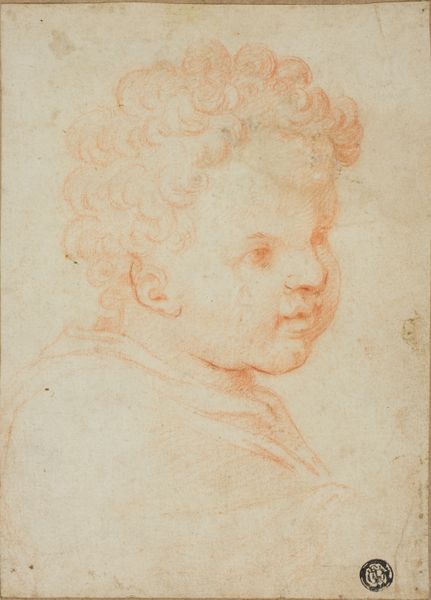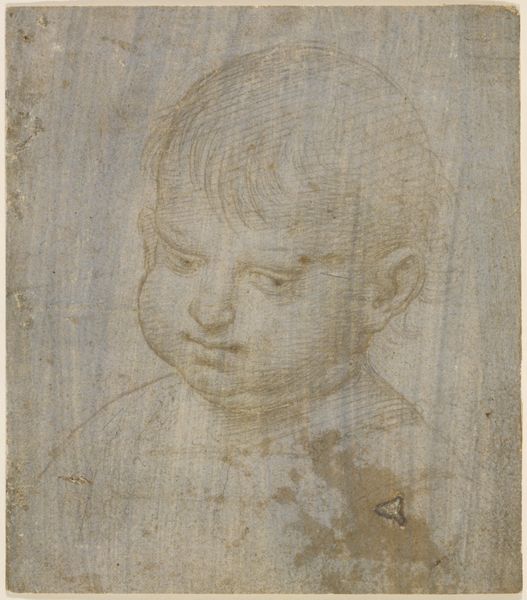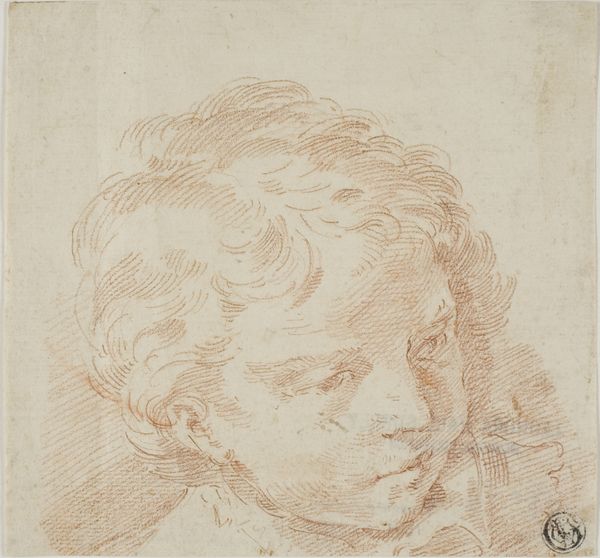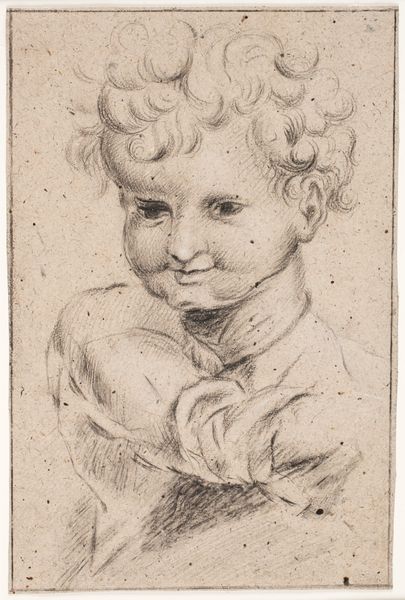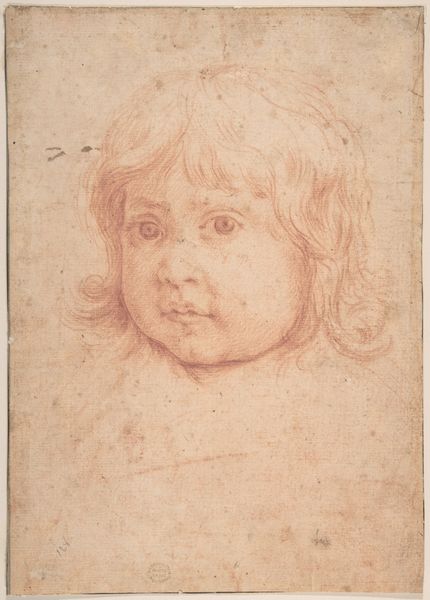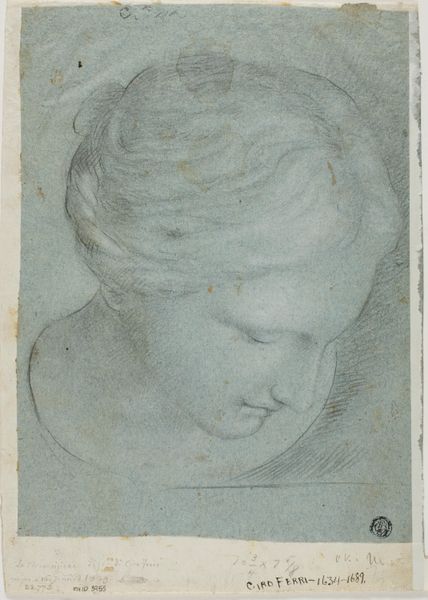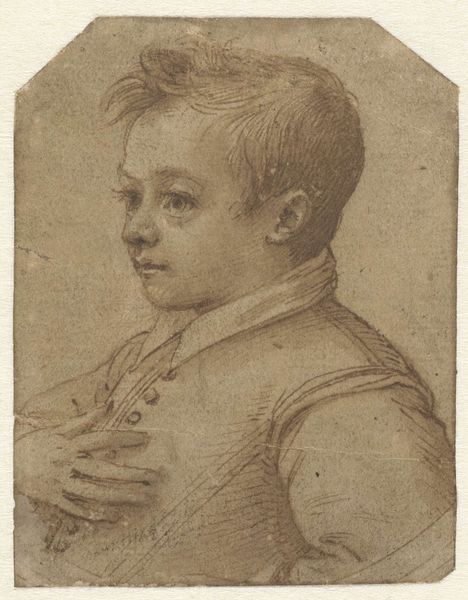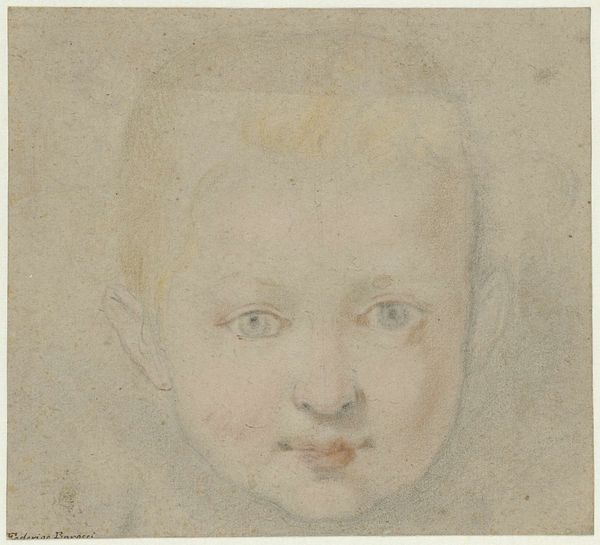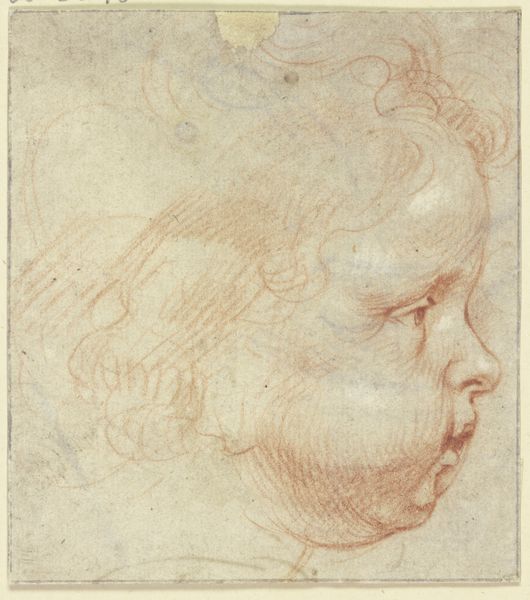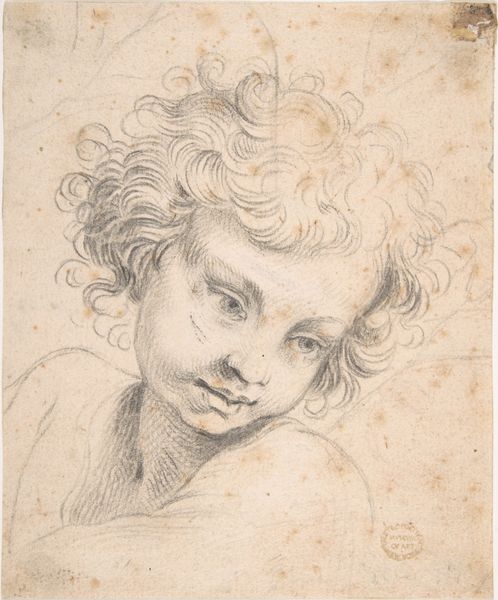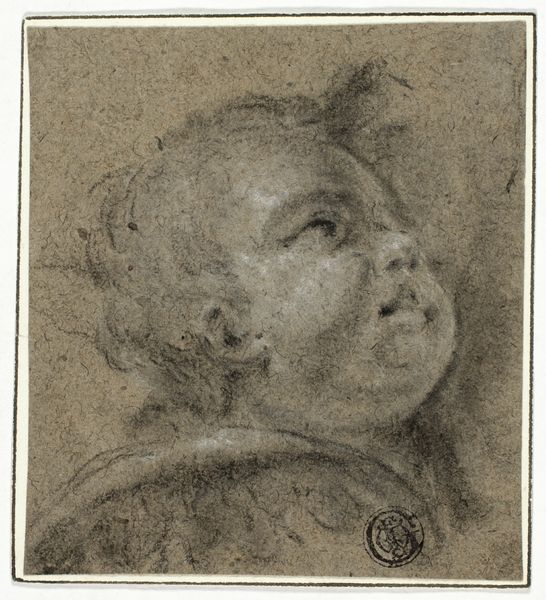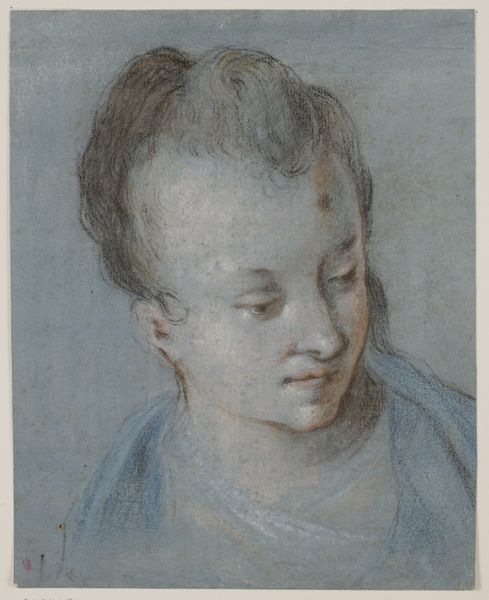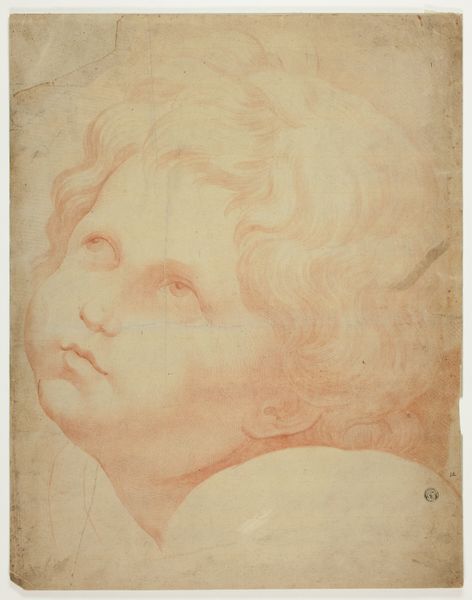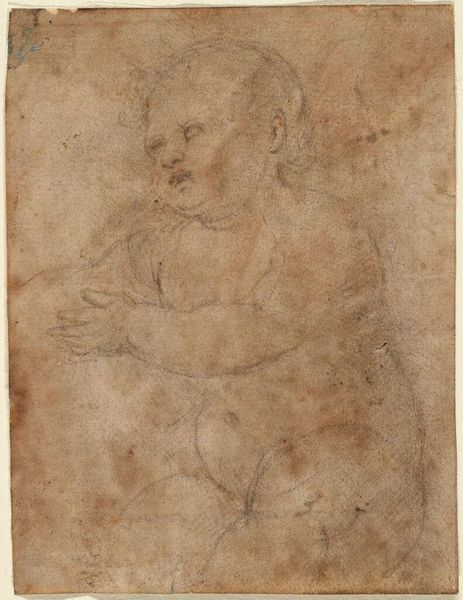
drawing, paper, pencil, chalk, graphite
#
portrait
#
drawing
#
charcoal drawing
#
figuration
#
paper
#
11_renaissance
#
pencil
#
chalk
#
graphite
#
academic-art
Dimensions: 168 × 138 mm
Copyright: Public Domain
Curator: Here we have "Child's Head," an undated drawing currently held at The Art Institute of Chicago, attributed to Giovanni Battista Caracciolo. What are your initial thoughts? Editor: It’s interesting; my eye is drawn immediately to the materiality. The paper has aged, but it's intriguing to imagine the labor and resources – the paper mill, the gathering of graphite, the creation of chalk – all culminating in this intimate portrait. Curator: Indeed. From a formalist perspective, observe the composition. The subject, a cherubic child, occupies nearly the entirety of the frame, cropped to emphasize the head. The artist utilizes delicate lines and subtle shading to capture the soft contours of the face, achieving a remarkable sense of volume and realism. Editor: Right. And consider the economic structures supporting such artwork. Who commissioned this piece? What social class did this child belong to, allowing them to be the subject of art? The access to such artistry was undeniably skewed. Curator: The delicate interplay of light and shadow contributes significantly to the work’s emotional resonance. The downcast eyes and subtle pursing of the lips evoke a sense of contemplative innocence, tinged with a hint of melancholy. This evokes classic academic style. Editor: While I agree about the emotional complexity, I wonder about the production methods. Were there apprentices preparing the paper or grinding pigments? What role did those unseen laborers play in enabling Caracciolo’s work? And did Caracciolo value the skills and input of his underlings? Curator: A fascinating, yet impossible point, given this work’s era. Returning to the piece itself, let's acknowledge the medium. The drawing is executed in graphite, chalk, and pencil on paper, allowing for a range of tonal variations and textures. The artist masterfully exploits these qualities to create a sense of depth and dimension, highlighting the inherent qualities of his medium. Editor: Well said, but ultimately it speaks of class difference. This head may elicit an individual interpretation; to others, though, it might be more than a demonstration of technical virtuosity – instead representing economic disparities, and, moreover, the largely unacknowledged production system necessary to create art such as this in the first place. Curator: It appears we find ourselves in amiable disagreement again. In any case, studying “Child’s Head” provides a lens through which we might reconsider the value of representation and of seeing childhood. Editor: Agreed. Examining “Child’s Head” invites us to consider art’s larger context and, in some sense, its material constitution—it is something fabricated, with inherent material constraints and affordances and implications regarding production of value.
Comments
No comments
Be the first to comment and join the conversation on the ultimate creative platform.
